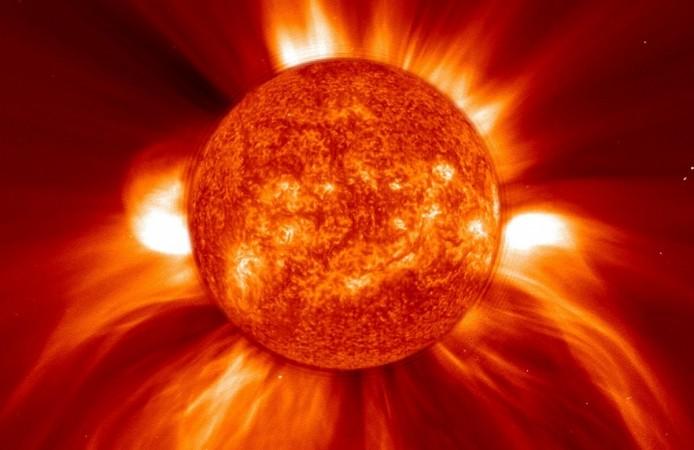
Despite being the source of energy responsible for the sustainability of life on Earth, many mysteries about Sun, the solar system's only star, are yet to be solved. In what is claimed as a "ground-breaking discovery," an international team of scientists at Queen's University Belfast has found that magnetic waves crashing through Sun could be heating its atmosphere and propelling solar wind.
Scientists have suggested for many years that Alfvén waves -- a type of magnetohydrodynamic wave first predicted by Swedish physicist and engineer Hannes Alfvén in 1942 -- may help the Sun maintain its extremely high temperatures. Although scientists across the globe have predicted that these waves travel upwards from the solar surface to break the higher layers, releasing huge amounts of energy, no solid proof about these waves' role in heating the Sun has been found until now.
"At Queen's, we have now led a team to detect and pinpoint the heat produced by Alfvén waves in a sunspot. This theory was predicted some 75 years ago but we now have the proof for the very first time," David Jess from the School of Mathematics and Physics at Queen's University Belfast said in a statement.
As part of the new study, published in the journal Nature Physics on Monday, the scientists used advanced high-resolution observations from the Dunn Solar Telescope in New Mexico and other complementary observations from NASA's Solar Dynamics Observatory to analyze strongest magnetic fields that appear in sunspots.
The researchers broke down the Sun's light into its constituent colors and examined the behavior of certain elements, including calcium and iron, within the solar atmosphere. After researchers managed to extract these elements, they detected intense flashes of light in the image sequences with all the traits of the Alfvén waves converting energy into shock waves.
"The shock waves then ripple through the surrounding plasma, producing extreme heat," Samuel Grant from Queen's University Belfast said in the statement. "Using supercomputers, we were able to analyze the data and show for the first time in history that the Alfvén waves were capable of increasing plasma temperatures violently above their calm background."
"Our research opens up a new window to understanding how this phenomenon could potentially work in other areas such as energy reactors and medical devices," Jess added.

















